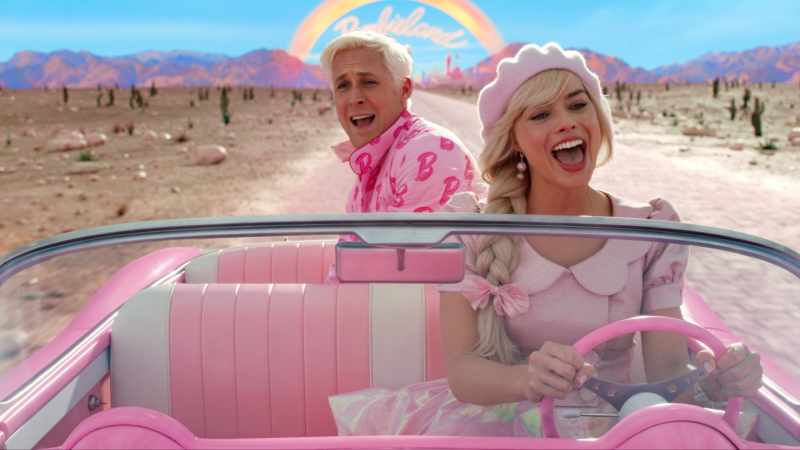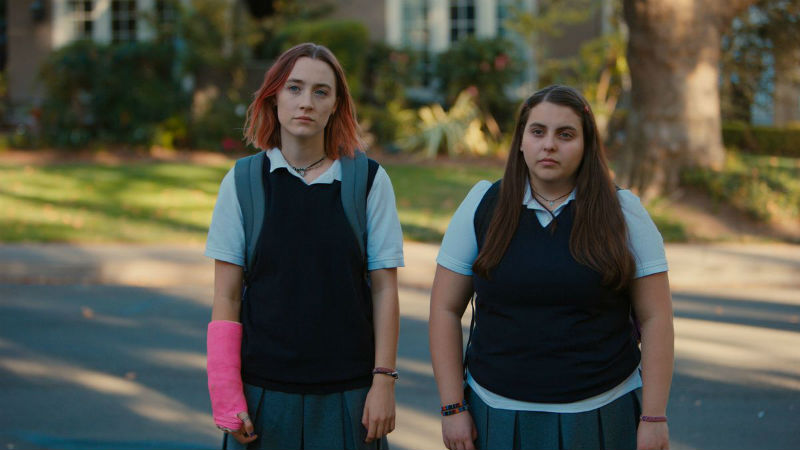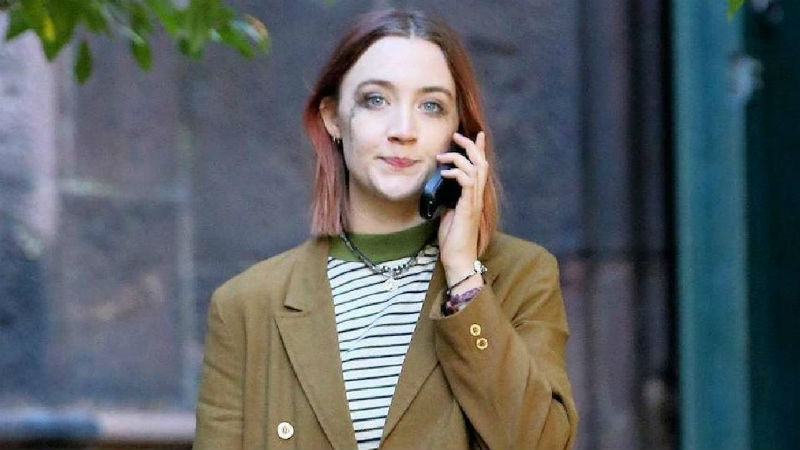Never before in your life have you seen as much pink. Costumes, houses, cars, streets and even the sky. Your eyes might suffer inflammation or photophobia. You might become pink-blind. This is a luminescent movie that exudes not just colour, flair and vigour, but also some very bright and gleaming messages. At a duration of nearly two hours, Greta Gerwig’s third feature film (after 2018’s Lady Bird and 2020’s Little Women) is her most expensive and commercial one, but this does not mean that the 39-year-old director has waived her auteurial sensibilities, her audacity, and her ability to touch and move even the most cynical and hardened of hearts.
Barbie starts out with a fitting tribute to cinema: the pre-human apes in the opening of Stanley Kubrick’s 2001: A Space Odyssey (1968) are replaced with pre-Barbie dolls (with the song Also Sprach Zaratrusta et al!). The narrator’s voice (Helen Mirren) explains that the curvaceous new toy revolutionised the world by empowering young girls, who could now play with an independent women, instead of feeding babies. We soon find out that reality isn’t that black and white, and that the doll manufactured by Mattel has other far less inspirational connotations. Not everyone perceives it as some sort of feminist icon. These contradictions are meticulously dissected and examined, without ever slipping into didacticism. Barbie is plush and loud throughout. It is never tedious and scholastic. Instead, it’s unabashedly plastic. It’s fantastic.
The titular doll is played by Margot Robbie, and her boyfriend Ken by Ryan Gosling, with his chest shaved and his hair bleached baby blond. Well, in fact nearly all of the neatly dressed, perfectly chiseled dolls that inhabit Barbieland are called Barbie or Ken, providing for the strangest film credits ever (with countless actors playing a character by the same name). Their life is perfect. The Barbies wake up in their dream house, literally jump into dream car and rive to the beach. They have trophys boyfriend with whom they can party but don’t have to spend the night with. Nobody knows where the Kens live. Everything is plastic and fake, from the blue sea (on which the dolls can walk) to the cars (which have to engine), or even the food and drink (the dolls make do that they eat/drink, without ingesting anything). Barbie and Ken have no genitalia.
Parallel to this bizarrely sanitised land is the “real” world, inhabited by real human beings.
One day, our protagonist Barbie (nicknamed “the stereotypical Barbie”, in reference to her mainstream looks) is horrified to find out that her feet have gone flat (instead of perennially curvy from wearing high heels) and that her leg is covered in cellulite. Plus she is having death thoughts. All thoroughly incompatible with the perfect world in which she lives. A fellow doll, who happens to be “ugly and weird” because her owner in the real world mistreated her, explains to Barbie that she is experiencing the same (a child in the real world is punishing her). So Barbie sets off on an incredible journey in order to find the girl responsible for her collapsing looks and dark thoughts. The passage from Barbieland to planet Earth is particularly impressive, with characters rollerskating, jet skying and cycling into the new dimension (or breaking and fixing the rift in the space-time continuum, as the film puts it). The inhabitants of the real world act are as futile and easily influenced as the dolls. The main differences are that they wear less colourful clothes, are prepared to use real violence, and possess very real genitalia. Another peculiarity (one that immediately strikes Barbie) is that in the real world it is the men who are in control. She never knew the patriarchy existed.

The many ensuing twists provide a fertile ground for the philosophical debate between various strands of feminism, and of the patriarchy. Does Barbie’s perfect body empower or imprison her, the movie seems to ask, leaving viewers scrambling for an answer. The film also raises questions about fascism and the frenzied search for perfection. Is it ok to seek beauty, or is this the trapping of a society as artificial and superficial as the waters of Barbieland Beach? Also notably, the movie explicitly asks: is it possible to subvert the dichotomy of the “weird and ugly” versus the “brainwashed”? In other words: is it possible to be beautiful and intelligent, or is Barbie doomed to be a “blonde bimbo girl in a fantasy world” for eternity?
Ultimately, Barbie is a movie about the complicity between the various generations, the various classes and the various races of women. The female characters, however gullible and innocent, are ready to stick together and fight for each other. They successfully reconcile their differences because they understand that their distinctions (in look, colour or ideology) are an asset, and never a handicap. The men, on the other hand, are consumed by narcissism and competitiveness. They fight each other like rabid dogs locked inside a cage. There is no sense of solidarity. It is the males that provide the funniest moments of the movie, as Gerwig hilariously mocks toxic masculinity, conformity, consumerism and even American pop culture (think of the worst MTV video you’ve seen in your life and you’re halfway there).
Another takeaway from Barbie, perhaps a far less profound one, is that straight men can be skilfully Camp. With a capital “C”. Extreme masculinity is just as exaggerated and absurd as hyper-femininity, or the gayest of homosexuals. John Waters would probably be impressed. What’s there not to like about a pink-clad and fabulously cocky Ryan Gosling baring his smooth chest while twerking his face, in a display of his unwavering macho confidence.
The design, costumes, art direction are as impeccable as Barbie’s hair and attire. You will feel like you have been transported into a toy world.
Mattel plasticised humanity when they invented the Barbie doll 64 years ago. Greta Gerwig does just the opposite: she humanises plastic. They both deserve credit. The doll and the film are equally revolutionary, even if this type of revolution does not befit every female person on Earth. Thank God that real women – unlike the Barbie dolls – come in all shapes and forms, can think independently for themselves, and make their own choices.
Barbie is in cinemas worldwide on Friday, July 21st. On all major VoD platforms on September 1st.










